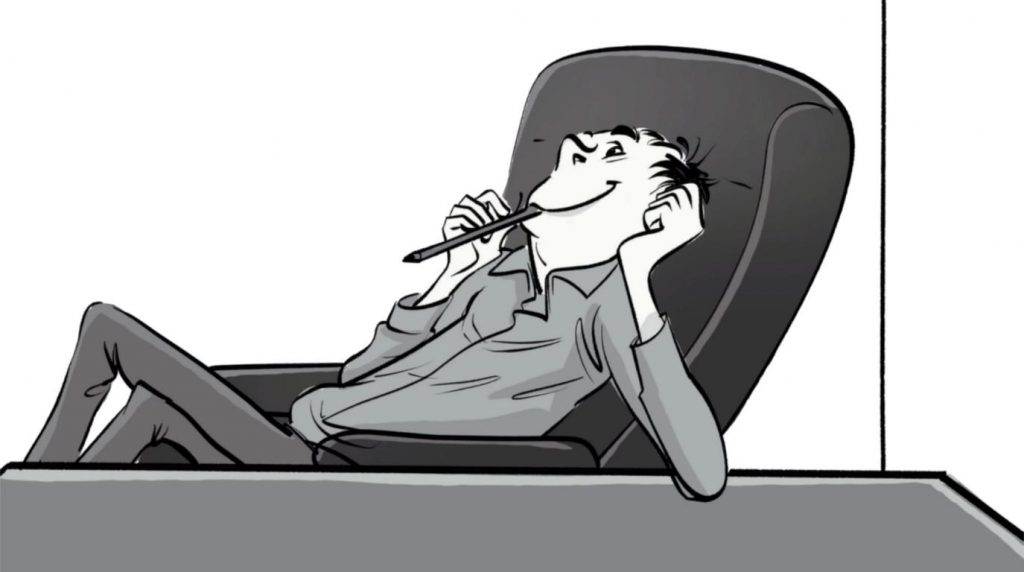Confirmation bias is a tendency to select, process and interpret information in a way that aligns with one’s internal belief system. The confirmation bias is an example of a cognitive bias, a set of thought patterns that distort the objective interpretation of input in favour of creating “one’s subjective reality”. As cognitive biases occur subconsciously, it is very hard to eliminate, or even identify them. Someone’s irrational behaviour or opinions may simply be a result of the thought patterns they have developed throughout their lives rather than them being inherently “bad” or “different”, but convincing them otherwise however may be like shouting into a turned-off mic. The one thing we can do however, is to learn about it and spread the word. Read on to get inspired!
The full story

Two guys are sitting together in a bar in the remote Alaskan wilderness arguing about the existence of God. While they’re old friends, they have very different ideas on God — one is a priest, and the other one is an atheist.

The atheist says, “Look, it’s not like I haven’t given God a chance. I’ve even tried the prayer thing. It didn’t work.” The priest asks with some incredulity, “Did you really pray? When did this happen?”

“Just last month,” replies the atheist. “I got caught away from the camp in a terrible blizzard. I was totally lost and I couldn’t see a thing. It was 20 degrees below zero, and so I prayed. I fell to my knees in the snow and cried out ‘Oh, God, if there is a God, I’m lost in this blizzard, and I’m going to die if you don’t help me’.”

The priest looks at the atheist puzzled and says, “Well then you must believe in God now. After all, here you are, alive!” The atheist rolls his eyes and replies, “No No, that’s not how it happened. A couple of Eskimos came wandering by and showed me the way back to the camp”. So, where do such different perspectives come from?

Confirmation bias is a tendency to look for, interpret, and recall information in ways that affirm our preconception. Whenever we encounter objective facts on an issue we look at them through the lens of our own beliefs. As a result, we see and overrate where the two intercept. The bias is strongest for emotionally charged issues or when we search for desired outcomes.

Wrapped inside popular narratives, cultural beliefs and family values, a confirmation bias often gets passed on for generations.

The priest learned from his ancestors that God is behind everything. The atheist was raised within a family that believed only in scientific knowledge.

When we are confronted with unfamiliar or new situations, a bias helps us to draw fast conclusions. If every encounter with a stranger would require us to think of all sorts of possible outcomes, we would not come to any conclusions. Economically speaking, it would be too costly.

To survive in a dangerous world, we learn to operate, like storytelling, pattern-seeking animals, each one of us thinking that OUR story in OUR head is the right one. Today we can afford to slow down and think more deeply about certain issues. When we do this we can become aware of our own biases. We begin to realize that things are often more complicated than we thought.

Psychologist and Nobel Prize Winner Daniel Kahneman, said: “A reliable way to make people believe in falsehoods is frequent repetition because familiarity is not easily distinguished from truth.” Which means, “If there is time to reflect, slowing down is likely to be a good idea.”
“I swear there’s no better informative YT channel like this, I’m so freaking happy I stumbled across you guys”
– Mohamed lamine 99
Sources
- Confirmation bias – Wikipedia
- Self-serving bias – Wikipedia
- Daniel Kahneman – Wikipedia
- Hindsight bias – Wikipedia
- What Is the Function of Confirmation Bias? A scientific perspective published in Erkenntnis An International Journal of Scientific Philosophy
Dig deeper!
Classroom exercise

As mentioned before, confirmation bias occurs subconsciously and so is very difficult to identify. The sooner we learn that it exists, the more aware we can become of our own thoughts and perhaps even identify and overcome instances when our biases may hinder our objectivity.
Psychologist Peter Cathcart Wason, who coined the term confirmation bias, left us with this fun little Hypothesis Rule Discovery Task to help us explore it. Let’s see if you and your class can do this Confirmation bias class activity! What’s the rule behind this sequence of numbers: 2 4 6… — and what comes next? Write the correct number and the rule we are looking for in the comments below. Now! Fast!

10